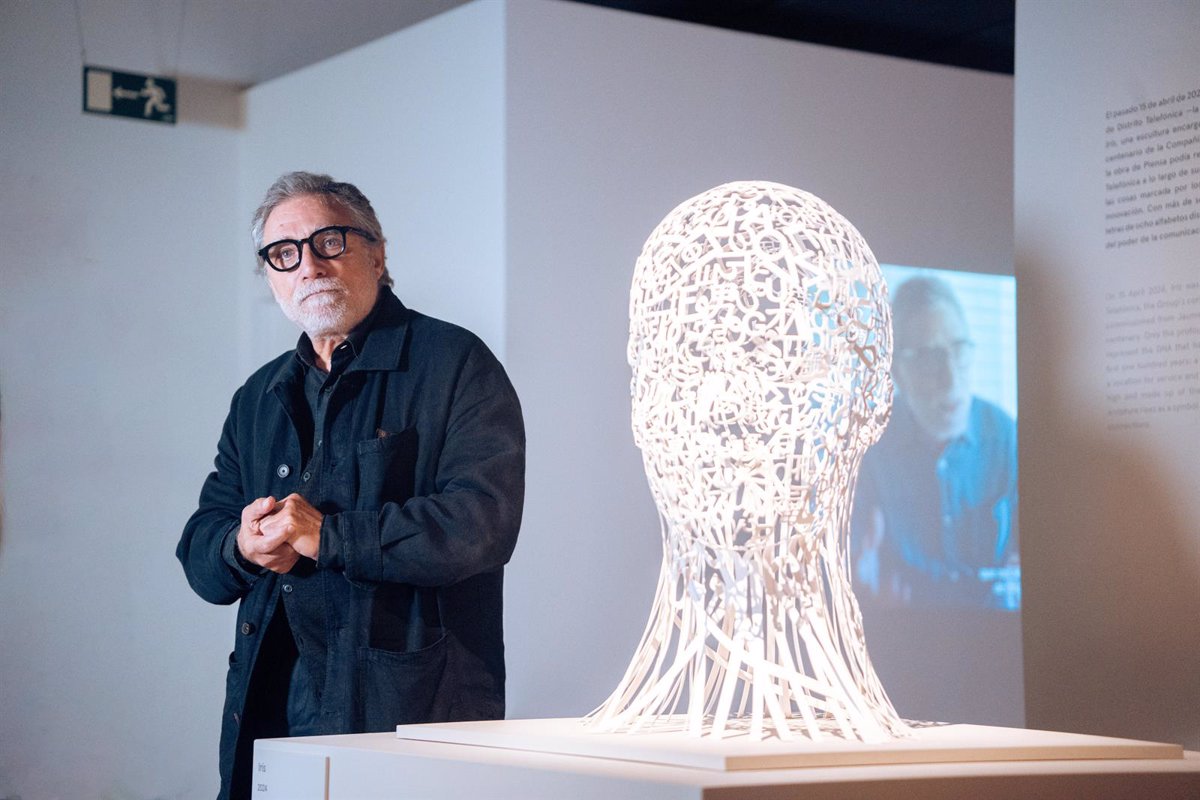He Telefónica Foundation Space brings together fifteen works by Jaume Plensa more than two decades after the last monographic exhibition dedicated to the Catalan artist in the capital, which has made sculpture ‘Julia’ installed since 2018 in the Plaza de Colón, one of its symbols: “Madrid has welcomed her as another icon. ‘Julia’ is already one of the people of Madrid”, Plensa stated in statements to Europa Press.
“I think it was one of the most beautiful things that has happened to me in my life.”“, Plensa has assured in reference to the twelve-meter sculpture that has been in Plaza Colón since December 2018 and whose stay in this enclave has been renewed until December 2024, extendable for three more years, until December 2027.
This was stated during the presentation of the exhibition ‘Jaume Plensa. Interior matter’ which can be seen on the third floor of the Fundación Telefónica Space in Madrid from this Thursday until May 4, 2025 and which It brings together fifteen works by the Catalan artist, spanning more than 30 years of experience.from the early nineties to the present, while exploring different perspectives on the human condition that runs through all of his production.
The exhibition thus allows us to delve into recurring themes of his artistic universe such as identity, the fragility of the human condition, the ephemeral, spirituality, silence, communication or language.
“I have used light as a union between the works. I believe that everything is born from darkness, therefore, here I could talk about it. Darkness is the darkness of the brain where ideas are born, the darkness of the mouth where words are born, the darkness of the womb where boys and girls are born, that is, life. Everything that is human life, everything is born from a darkness that we transform into dreams. I believe that this exhibition speaks a lot about this, about this world of dreams in which we can feel part.” Plensa detailed.
For his part, the general director of Fundación Telefónica, Luis Prendes, detailed in a press conference that “Plensa’s work attempts to build values, generate community, hope and harmony for the communities in which it is based and connect people“.
The exhibition begins with the documentary ‘Can You Hear Me?’ (2020) by Pedro Ballesteros, which addresses his creative process, his personality and his work philosophy, along with a mural photograph of his studio titled ‘Paisaje de Jaume Plensa’ (2018) and the model of ‘Iris’ (2024), a monumental piece that can be visited at the company headquarters and has become part of the Telefónica Art Collection.
Next are ‘Self-Portrait’, (72 kg) (1993) and ‘Self-Portrait’ I, II and III (1998), in which the artist gathers data on his body weight and physical complexion at a moment. specific of his life, to generate a metaphor about identity, physical presence and the relationship between the body and the environment.
These concepts are also explored in the sculptural series ‘Silence’ (2016) where, through seven female faces, it invites reflection on who we are as individuals and as part of a broader community.
The sample is also completed with ‘Glückauf?’ (2004), a succession of letter curtains that literally recreate the 1948 Declaration of Human Rights and that invite the visitor to cross them, enveloping them and transforming the abstract notion of language into a tangible, tactile work of great poetic beauty; or ‘Il suono del sangue parla la stessa lingua’ (2004), in which the artist also focuses on the importance of language and words. Furthermore, with his work ‘Lilliput’ (2012-2020), Plensa once again focuses on language and repetition, among other pieces that make up the exhibition.
